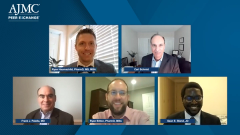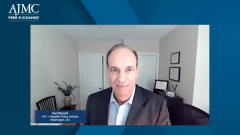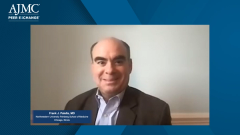
Barriers to Access for HIV PrEP
Sean E. Bland, JD, discusses barriers to access for eligible patients to receive HIV PrEP therapy.
Episodes in this series

Ryan Haumschild, PharmD, MS, MBA: I want to transition to health policy. We’re lucky to have Sean on today. Sean, I’m going to look for your input here as to what are some of those barriers to accessing appropriate patients to receive PrEP [pre-exposure prophylaxis]? I know you’ve done a lot of research in this space and I’m curious from your perspective, what are some of the biggest barriers regarding access for appropriate patients?
Sean E. Bland, JD: Thank you for that question. There are a number of barriers to people receiving PrEP. While we’ve made some progress on PrEP education efforts, as others have mentioned, awareness of PrEP is a key issue, and it’s a barrier. It’s still too low, so we need more community education and awareness campaigns to reach all the populations that could benefit most from PrEP, particularly Black and Latinx gay and bisexual men, cisgender women, particularly Black women, and also transgender women and men. Again, those are all populations that need to be the focus of awareness campaigns. Those campaigns need to emphasize again, the preventive value of PrEP, but also need to represent sexual pleasure and how PrEP can fit in to make people’s lives better in a general sense, to relieve stress around a maybe risky sexual behavior that you engaged in and not have to think about what that could mean in terms of a new HIV diagnosis. Thinking about that is critical.
There are also many misconceptions about PrEP, including around who it is for. I still hear a lot of folks who say that it’s really just for gay men. Although it can be a benefit for gay men, particularly Black and Latinx gay men, as I mentioned, and lots of other folks, but that’s also true for women and for trans folks, also for people who use and inject drugs, making sure that they’re part of the conversation as well. Also, there are misconceptions around adverse effects, so we need campaigns also to emphasize that PrEP is safe and effective, and that it’s an option for different communities. Some other barriers I see coming up, particularly on the legal and policy side, are around laws around minor consent and the ability for young people to access confidential care when they’re on their parents’ health plan. That can be a barrier to PrEP. Other barriers, which have already been mentioned, surround perceiving oneself as being at risk for HIV. Related to that barrier, providers often don’t talk to their patients about sexual health and as a result, they don’t discuss PrEP with individuals.
This is an issue for engaging particularly a lot of younger folks, which we’ve called out, but it also is a challenge for older folks. A lot of providers don’t see older folks, including older gay and bisexual men, as being sexually active, or older women as being sexually active. They are, and we need to make sure that providers are having those discussions about sexual health with everyone, including groups that they may have their own misconceptions about. When we’re screening for PrEP, a lot of the focus is generally on behavioral risk assessment. That risk assessment doesn’t always consider some of the structural and environmental factors that impact vulnerability to HIV. Again, we need to make sure that folks feel comfortable discussing sexual and drug-using behaviors. Often, they don’t feel comfortable because of stigma, stigma around HIV, around sex, around drug use. Often providers contribute to those feelings of stigma, so it’s important to address both stigma and to address bias and discrimination from providers and others related not just to sex and HIV, but also to race, ethnicity, sexual orientation, gender identity, age, income, and other issues.
I want to briefly say that many of the folks I work with and engage the most, people from communities of color, aren’t used to going to the doctor at all. Particularly, many folks don’t go because they have had past negative experiences with the health care system. They often don’t trust the health care system. That’s a big barrier to getting folks onto PrEP if they don’t engage with health system at all. Many folks don’t have access to insurance, or they face disruptions in insurance, and just the complexity of the health system is a challenge, and people do need a lot of assistance and all those wraparound services that we mentioned. Even for folks with insurance, the cost of PrEP and the cost of PrEP-related services are a significant barrier, and connected to that also are challenges around accessing transportation and having convenient options that fit into their lives for them to be able to access PrEP. That lack of options is a barrier as well.
Ryan Haumschild, PharmD, MS, MBA: That was a great summary. You packaged a lot of things. I’m hoping we hit on those more as this discussion continues because it’s really that lack of awareness sometimes, just because PrEP therapy’s available, there are so many other things that we have to work through as barriers. Even those unconscious biases from those providers who are at that point of care, the ones who could initiate and screen for patients who are most appropriate and have some of these key conversations. How do we expand that? Sean, you hit on it really well, and hopefully we can expand upon that with your knowledge as we move forward.
Transcript Edited for Clarity
Newsletter
Stay ahead of policy, cost, and value—subscribe to AJMC for expert insights at the intersection of clinical care and health economics.































































